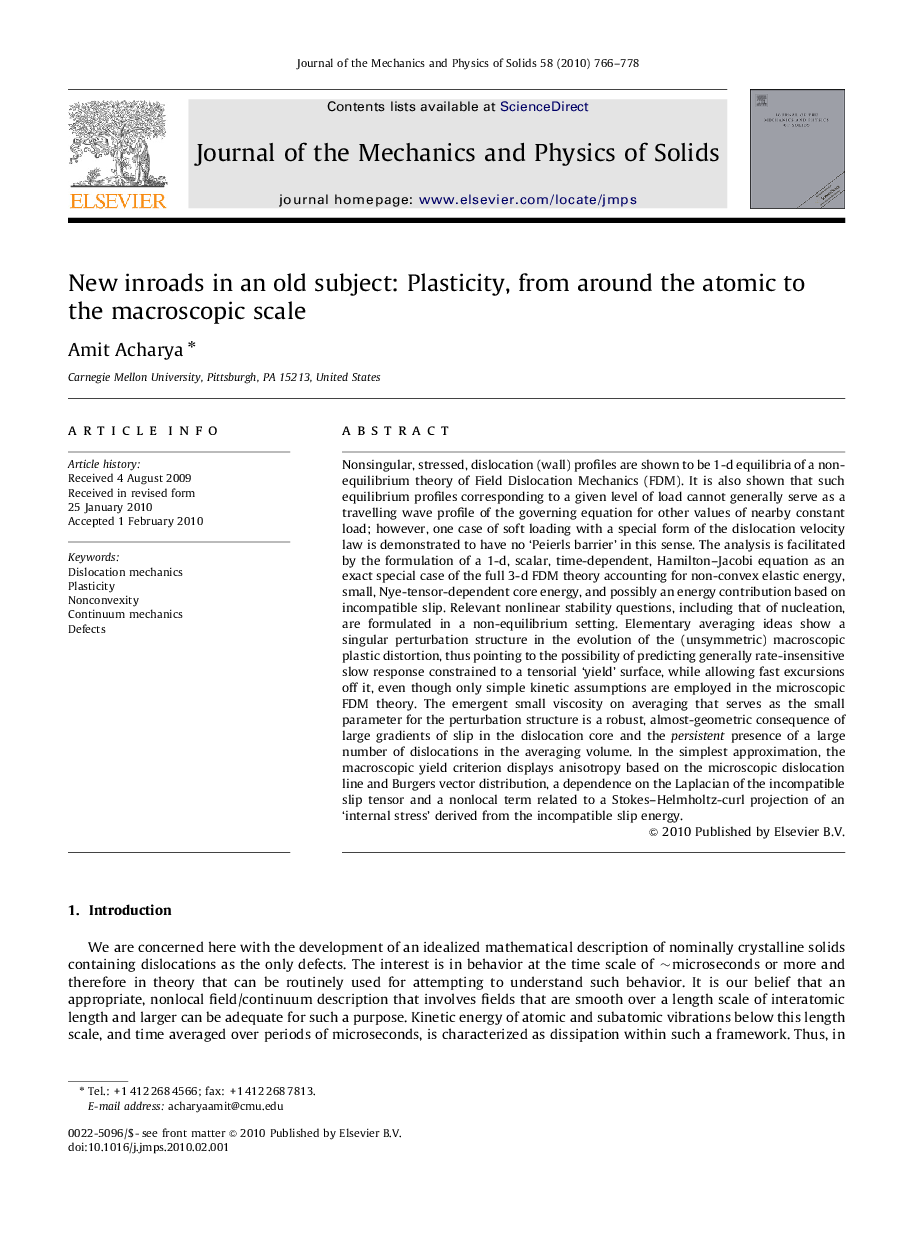| Article ID | Journal | Published Year | Pages | File Type |
|---|---|---|---|---|
| 799764 | Journal of the Mechanics and Physics of Solids | 2010 | 13 Pages |
Nonsingular, stressed, dislocation (wall) profiles are shown to be 1-d equilibria of a non-equilibrium theory of Field Dislocation Mechanics (FDM). It is also shown that such equilibrium profiles corresponding to a given level of load cannot generally serve as a travelling wave profile of the governing equation for other values of nearby constant load; however, one case of soft loading with a special form of the dislocation velocity law is demonstrated to have no ‘Peierls barrier’ in this sense. The analysis is facilitated by the formulation of a 1-d, scalar, time-dependent, Hamilton–Jacobi equation as an exact special case of the full 3-d FDM theory accounting for non-convex elastic energy, small, Nye-tensor-dependent core energy, and possibly an energy contribution based on incompatible slip. Relevant nonlinear stability questions, including that of nucleation, are formulated in a non-equilibrium setting. Elementary averaging ideas show a singular perturbation structure in the evolution of the (unsymmetric) macroscopic plastic distortion, thus pointing to the possibility of predicting generally rate-insensitive slow response constrained to a tensorial ‘yield’ surface, while allowing fast excursions off it, even though only simple kinetic assumptions are employed in the microscopic FDM theory. The emergent small viscosity on averaging that serves as the small parameter for the perturbation structure is a robust, almost-geometric consequence of large gradients of slip in the dislocation core and the persistent presence of a large number of dislocations in the averaging volume. In the simplest approximation, the macroscopic yield criterion displays anisotropy based on the microscopic dislocation line and Burgers vector distribution, a dependence on the Laplacian of the incompatible slip tensor and a nonlocal term related to a Stokes–Helmholtz-curl projection of an ‘internal stress’ derived from the incompatible slip energy.
